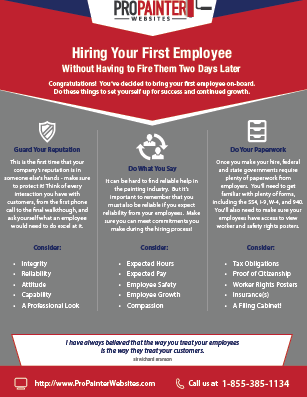When you're planning an industrial external painting task, don't underestimate the impact of weather condition on your outcomes. You need to consider elements like temperature level, moisture, and precipitation, as they can make or break your paint job. For instance, did you recognize that ideal problems require details temperature level arrays and moisture degrees? Stopping working to check these elements can bring about unequal finishes or even damages to fresh paint. Understanding these aspects is essential to achieving a lasting, specialist end result. So, what specific weather should you be wary of?
Temperature level Considerations
When it pertains to business exterior paint, temperature plays an important role in the result of your project. If painters near me in severe warmth, the paint can dry out too quickly, resulting in concerns like bad attachment and irregular surfaces. You want to aim for temperatures between 50 ° F and 85 ° F for the best results. Listed below 50 ° F, paint might not heal properly, while above 85 ° F, you run the risk of blistering and fracturing.
Timing your project with the ideal temperature levels is essential. Begin https://marcoulvdl.blog2freedom.com/33230465/environment-friendly-painting-alternatives-can-considerably-boost-your-environment-but-are-you-aware-of-which-sustainable-choices-truly-use-high-quality-and-safety-check-out-the-key-information-here in the early morning or later on in the mid-day when it's cooler, especially during hot months.
Additionally, consider the surface temperature level; it can be substantially more than the air temperature level, especially on sunny days. Utilize a surface thermostat to check this prior to you begin.
If temperatures are unforeseeable, watch on the weather report. Unexpected temperature drops or heat waves can derail your strategies. You do not want to start painting only to have the conditions alter mid-project.
Humidity Degrees
Moisture degrees substantially impact the success of your industrial exterior painting task. When the humidity is expensive, it can hinder paint drying out and treating, causing a range of issues like inadequate adhesion and finish quality.
If you're preparing a job during damp conditions, you may discover that the paint takes longer to dry, which can expand your project timeline and rise expenses.
Conversely, low humidity can additionally present obstacles. Paint might dry too promptly, stopping correct application and causing an unequal surface.
You'll want to keep track of the moisture degrees carefully to guarantee you're working within the excellent range, usually between 40% and 70%.
To obtain the best results, consider utilizing a hygrometer to determine moisture prior to beginning your task.
If you locate the degrees are outside the optimal range, you may require to readjust your schedule or pick paints made for variable problems.
Always speak with the supplier's standards for certain referrals on moisture tolerance.
Precipitation Impact
Rainfall or snow can dramatically disrupt your business outside painting strategies. When precipitation takes place, it can remove fresh used paint or create an irregular coating. Preferably, you want to select days with dry climate to make sure the paint adheres effectively and treatments efficiently. If you're captured in a rain shower, it's finest to halt the task and wait on problems to boost.
Furthermore, snow can be a lot more detrimental. residential painters does it create a wet surface area, yet it can also lower temperatures, making it hard for paint to completely dry. This can lead to issues like peeling off or blistering down the line.
It's vital to check the weather forecast prior to starting your job. If rainfall or snow is predicted, consider rescheduling.
Constantly bear in mind to enable adequate drying time between coats, especially if the weather stays unforeseeable.
Final thought
To conclude, watching on the weather is crucial for a successful business external paint task. By checking temperature level, humidity, and precipitation, you can make sure the best conditions for application and curing. Remember to prepare your job around beneficial weather condition and always adhere to maker standards. With the best approach, you'll attain a long-lasting, stunning finish that can stand up to the components. Do not allow the weather catch you unsuspecting-- remain informed and repaint smart!
